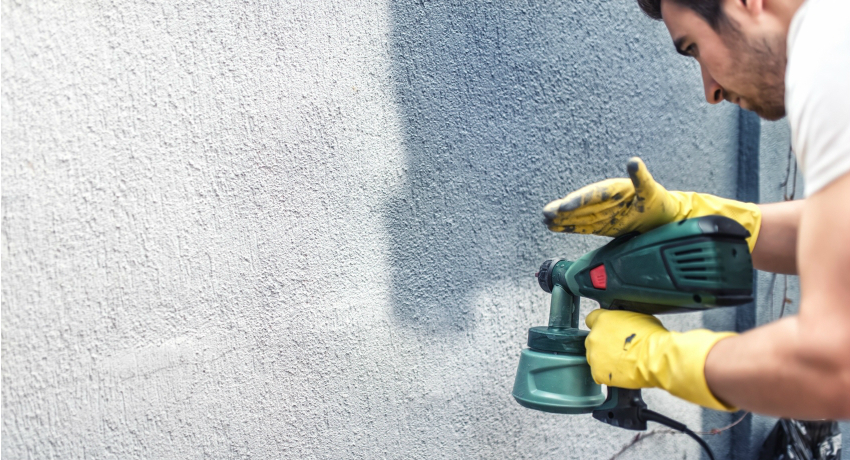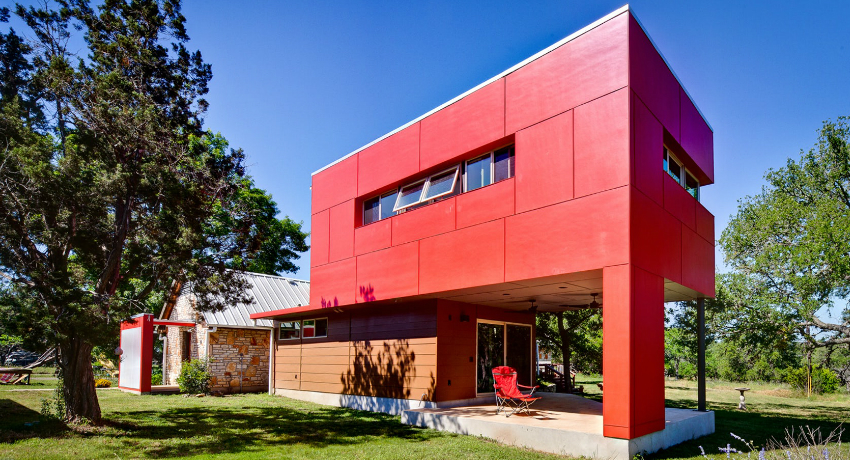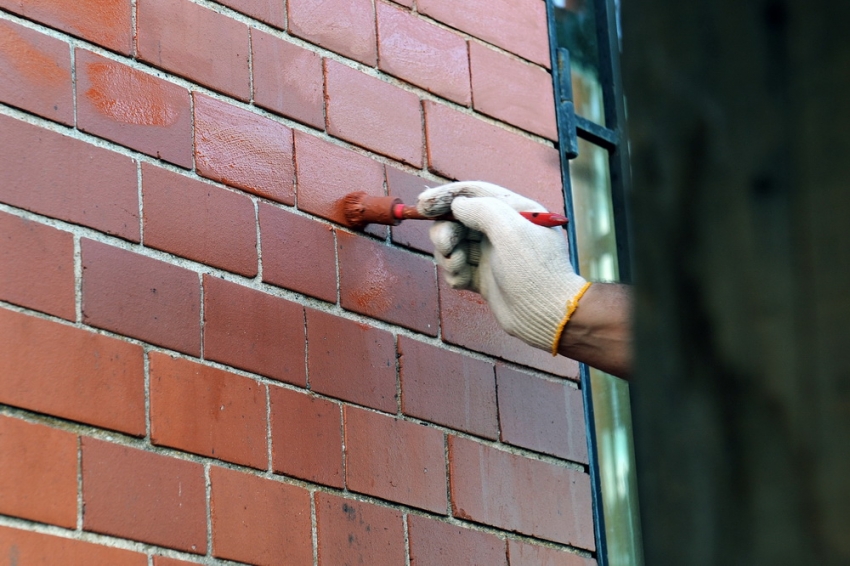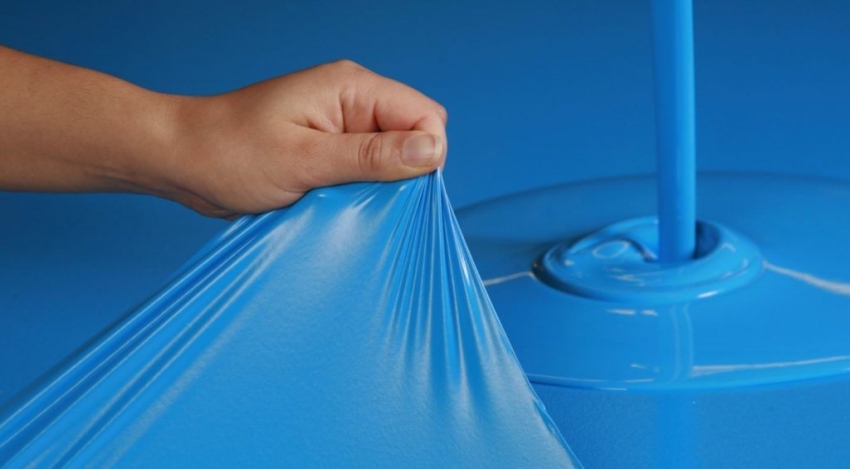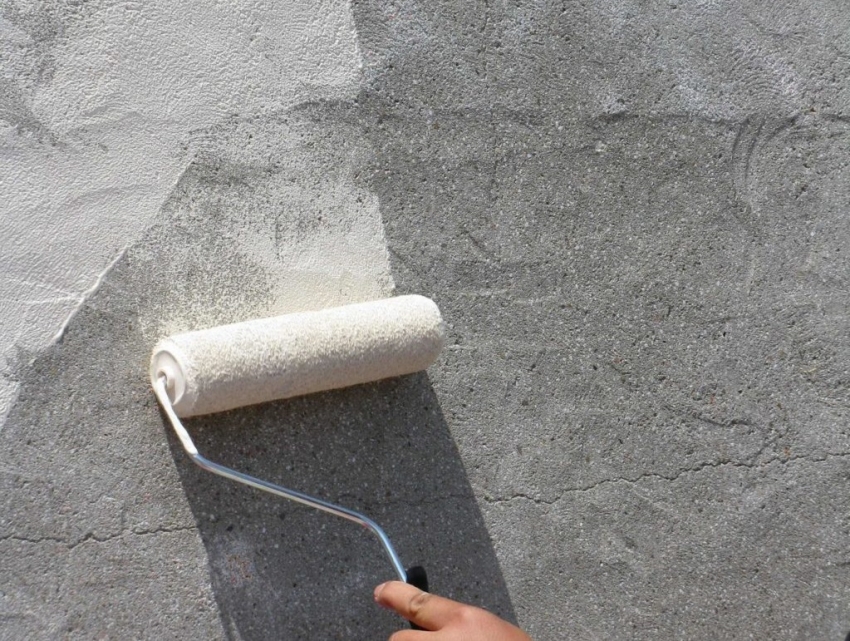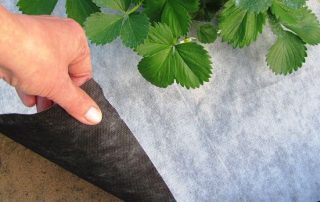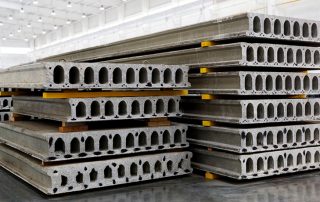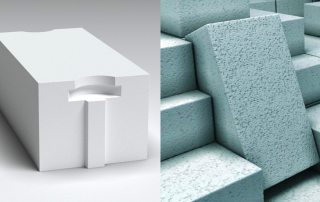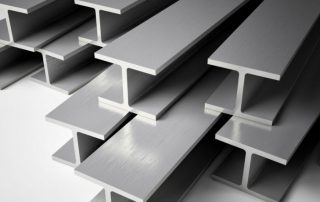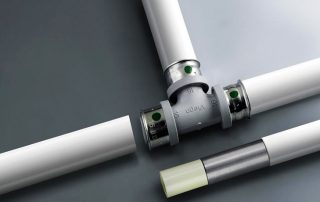The text discusses in detail such a type of finishing material as wear-resistant paint on concrete for outdoor use: existing types of compositions, their functionality and properties, characteristics, advantages and disadvantages. In the article you can find information to help you choose and correctly use paints and varnishes for concrete surfaces operated in outdoor conditions.
Content [Hide]
- 1 Wear-resistant concrete paint for outdoor use and the appropriateness of its use
- 2 How to choose facade paint for outdoor use: the main types of dyes
- 2.1 Classification of facade concrete paints by dissolution method
- 2.2 Characteristics of popular water-based concrete paints for outdoor use
- 2.3 Features of water-based facade paint on brick for outdoor use
- 2.4 Characteristics of mineral facade paint on brick for outdoor use
- 2.5 Features of acrylic paints for outdoor concrete work
- 2.6 Average prices for exterior paints from popular manufacturers
- 2.7 The use of facade paints: consumer reviews
- 3 Features of the choice of wear-resistant concrete paint for floors
- 4 Features of Wear Resistant Outdoor Rubber Paint
Wear-resistant concrete paint for outdoor use and the appropriateness of its use
Concrete is a very durable and reliable material with many useful characteristics. Therefore, it is widely used in suburban construction for the construction of houses and the improvement of sites. Outdoor concrete structures are adversely affected by weather and climate conditions.
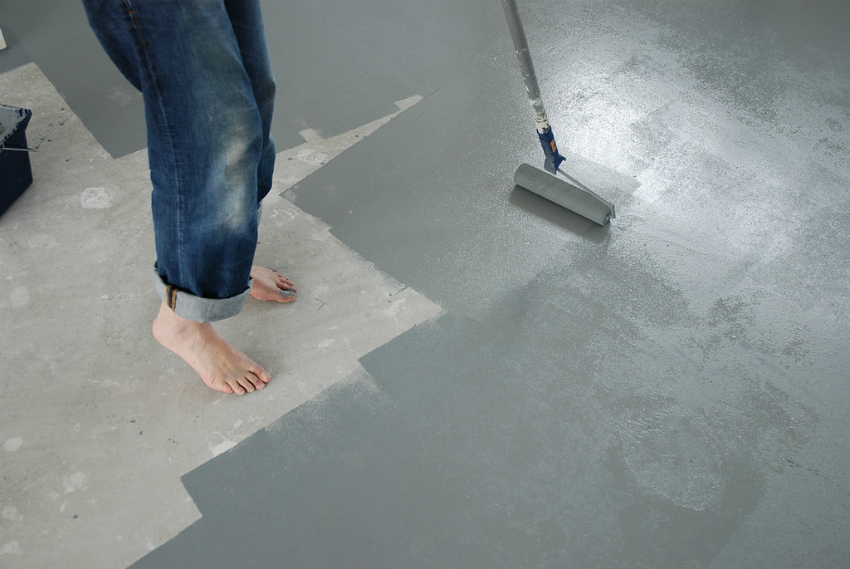
Exterior paint can be applied to bare concrete or covered with protective mixtures or "Liquid glass"
The negative factors of influence include:
- ultraviolet radiation;
- seasonal freezing and thawing;
- precipitation;
- loads of mechanical properties.
In addition, concrete is hygroscopic, so its structure absorbs a large amount of soil and moisture. For this reason, the material needs effective and reliable protection that can reduce the negative impact of these factors.Since most finishing materials do not react well to moisture, for these purposes it is recommended to buy concrete paint for outdoor use that has characteristics appropriate to the operating conditions.
The use of such paint will improve the decorative properties of concrete, extend its service life, hide minor irregularities and defects on the surface, and also provide protection from moisture and biological factors of influence.
Criteria for choosing frost-resistant concrete paint for outdoor use
First of all, a high-quality coating should be resistant to moisture. Thanks to this, the walls of the room will remain dry. High fire safety and resistance to combustion in the event of sudden ignition is another important criterion that should be paid attention to.
Adhesive properties reflect how well the colorant adheres to the surface. The higher this indicator, the longer the paint layer on the base will remain. If the compound has poor adhesion, the finish will flake off and flake very quickly. High resistance to direct sunlight is also important. If the coating is not UV resistant, the surface will quickly fade and discolor.
Helpful advice!If the building is located in a region with difficult climatic conditions, it is better to choose the most expensive and high-quality dye. A budget paint option will not be able to provide the necessary protection, and reworking concrete painting work will cost much more than buying a good composition.
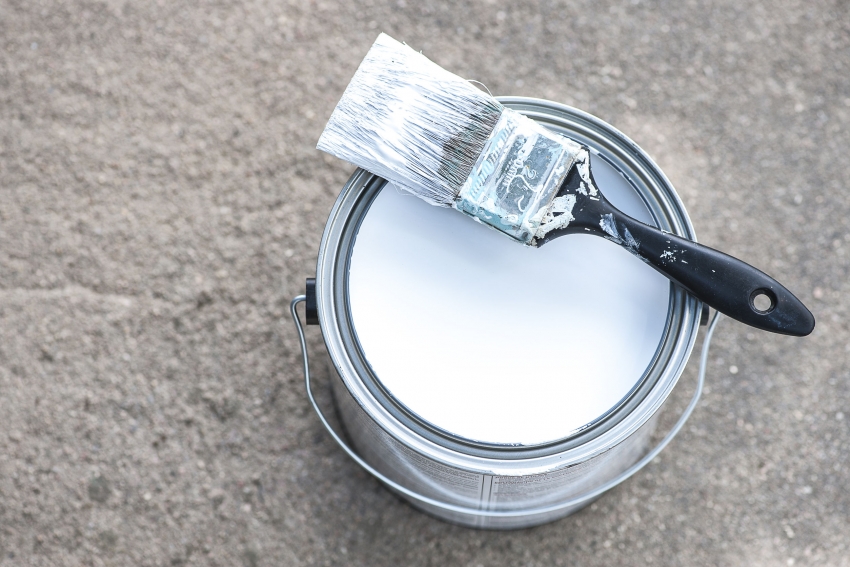
Frost-resistant paints for outdoor use keep the concrete surface from cracking and deformation in difficult climatic conditions
Since concrete structures are operated outdoors, consideration should be given to such criteria as the operating temperature range. A sudden change in weather conditions can affect the durability and appearance of the coating, therefore it is recommended to use an outdoor concrete paint that can withstand heat and frost without losing its performance. The minimum required interval is in the range from -40 to + 40 ° C.
This property of the dye, such as vapor permeability, provides oxygen access to the surface, thereby eliminating the likelihood of condensation accumulation on the walls. Most high-quality compounds also exhibit resistance to mechanical stress, which increases the life of the coating.
How to choose facade paint for outdoor use: the main types of dyes
Finishing materials for facades perform two functions at once: decorative and protective. A quality coating is capable of maintaining its properties and characteristics at very low and high temperatures. Some finishes are excellently used at temperatures ranging from -60 to + 800 ° C.
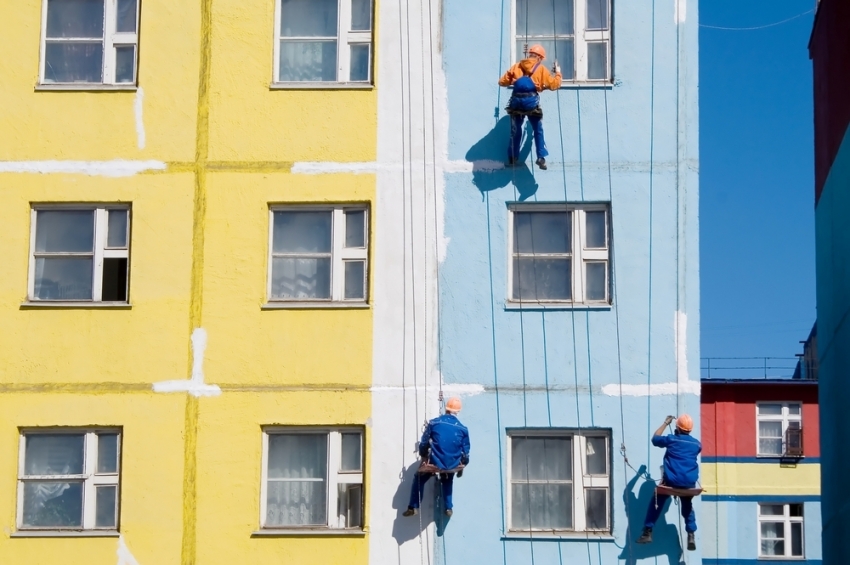
The consumption of the dye on the concrete surface depends on the type of composition and consistency
Facade concrete exterior paints have a wide range of applications:
- basement structures;
- concrete walls;
- chimneys;
- external and internal piping systems.
Average consumption of dye on a concrete surface is 250-650 g / m². This indicator depends on the type of composition. Other points depend on the type of finishing material. For example, the epoxy group of coatings has the highest resistance to mechanical stress. The use of silicone, polysilicon, silicate or acrylic paint on concrete for outdoor use requires careful preparation of the substrate, it must be dry and clean.
Paints and varnishes for finishing the facade of buildings increase the electrical insulation performance of the base, and also provide protection against the effects of water, aggressive alkaline environment and oxidative processes.A quality coating does not tend to accumulate dirt and can be used for at least 7 years.
Helpful advice! If there is a need for an environmentally friendly and fire-resistant coating, experts recommend using water-based dyes. These formulations are diluted with water and do not react to an alkaline environment.
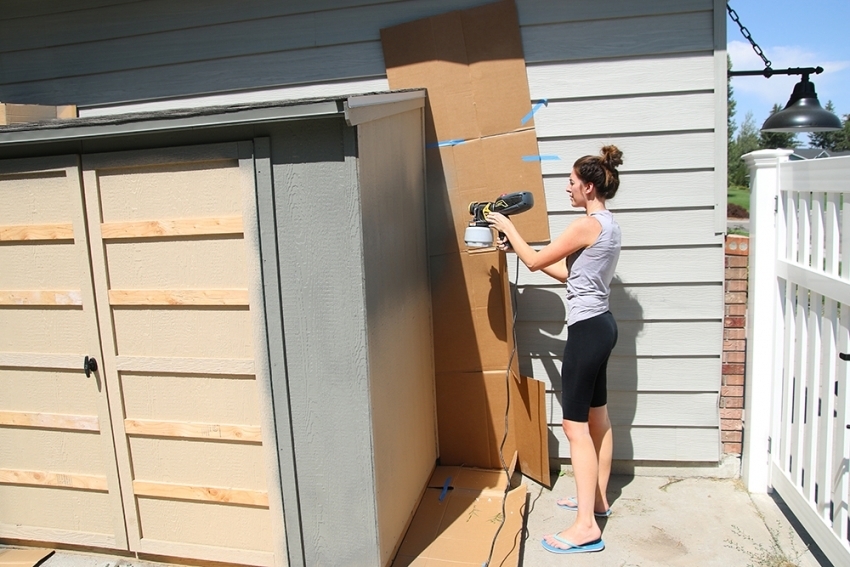
Before using silicone, silicate or acrylic paint on concrete, the surface should be thoroughly cleaned and dried
Classification of facade concrete paints by dissolution method
By the method of dissolution, dyes for facades are divided into two groups:
- Water soluble.
- Compositions that are diluted with solvents.
Water-soluble dyes are made from synthetic resins. Also, the composition contains additional additives, coloring pigments, fillers. Water-soluble finishing materials have a high permeability. They are resistant to ultraviolet radiation, temperature extremes and mechanical stress. The average service life of such a coating is 10 years.
Formulations that are diluted with organic solvents can be applied to surfaces at virtually any temperature. Even high humidity is not an obstacle. The solvent is usually xylene, solvent or white spirit. Such coatings are not without drawbacks. These dyes contain toxic substances and are highly flammable. For this reason, formulations that use solvents for dilution are less popular.

Before painting, paint should be carefully placed and, if necessary, thinned with a suitable solvent
Characteristics of popular water-based concrete paints for outdoor use
Water-based dyes are a wide range of finishing materials. Epoxies containing hardeners and resins have the highest performance parameters. Coloring can be carried out at almost any temperature. In this case, the finishing material can also play the role of a primer. Epoxy paints will not fade over time.
The coating does not react with chemical components and does not allow moisture to pass through. Epoxy paints also have disadvantages. These enamels are presented in the form of two components, which must be thoroughly mixed before application. Re-painting is complicated by differences in the color of the facade paint that is obtained after mixing and that which has already been applied to the surface. In addition, the finish emits harmful substances.
Acrylic-based compounds are applied to a previously prepared surface. To do this, the concrete must be dry cleaned or rinsed and dried. It is recommended to apply paint for exterior plastering work, although acrylics have excellent adhesion properties. A high-strength coating forms on the surface, it is not afraid of the negative effects of natural phenomena, chemicals and biological threats, for example, fungi and mold.
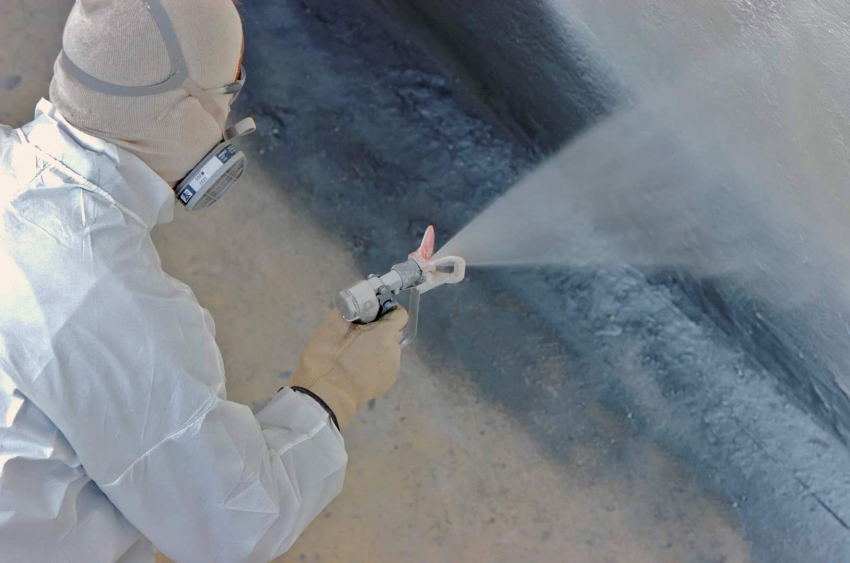
For large areas exterior paints for plastering, it is better to use a spray gun or spray gun
Water-based dyes practically do not contain toxic substances. They form a dense protective film-like coating on the surface. Using latex facade paint, as one of the subtypes of water-based materials, it is possible to obtain a coating with water-repellent properties.
Helpful advice! In addition to the primer, it is recommended to additionally use a hydrophobic agent on surfaces that are exposed to high humidity.
Features of water-based facade paint on brick for outdoor use
Water-based dyes are easy to use, they are in high demand among customers.
These formulations have many benefits:
- fast drying;
- lack of harmful substances in the composition;
- the smell of the dye quickly disappears;
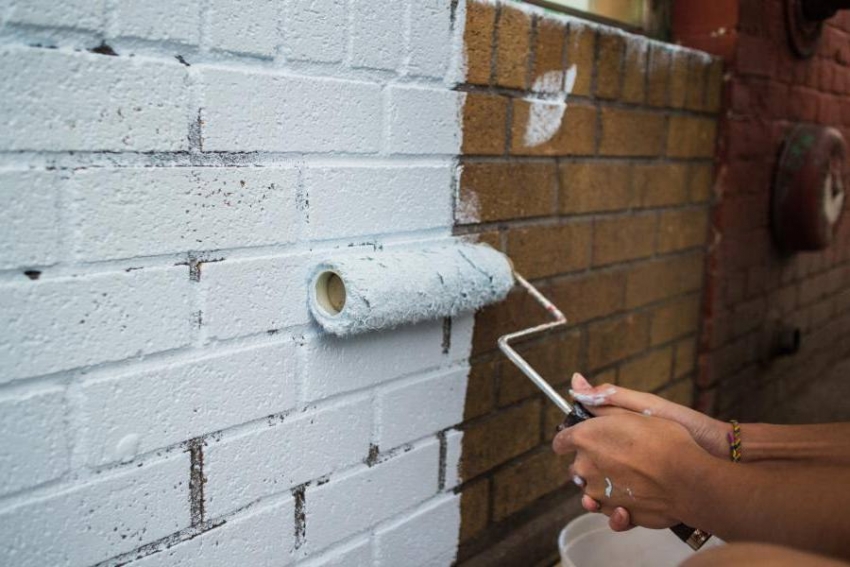
To paint balconies or residential areas, it is worth using water-based dyes, which practically do not contain toxic substances
- to adjust the color of the facade paint, special colors are used that allow you to get almost any shade;
- the mixture is applied very simply;
- after use, painting tools are easy to clean.
The use of water-based paints has certain limitations. Coloring can only be carried out at temperatures above 0 ° C.
By the type of base, water-based dyes are divided into the following types of compositions:
- Silicone - silicone resins are used for manufacturing. This type of coating is characterized by high vapor permeability. In addition, silicone paints do not contribute to the development of fungus.
- Mineral - cement or lime is used as a base. The material is not very durable, but it is easy to use.
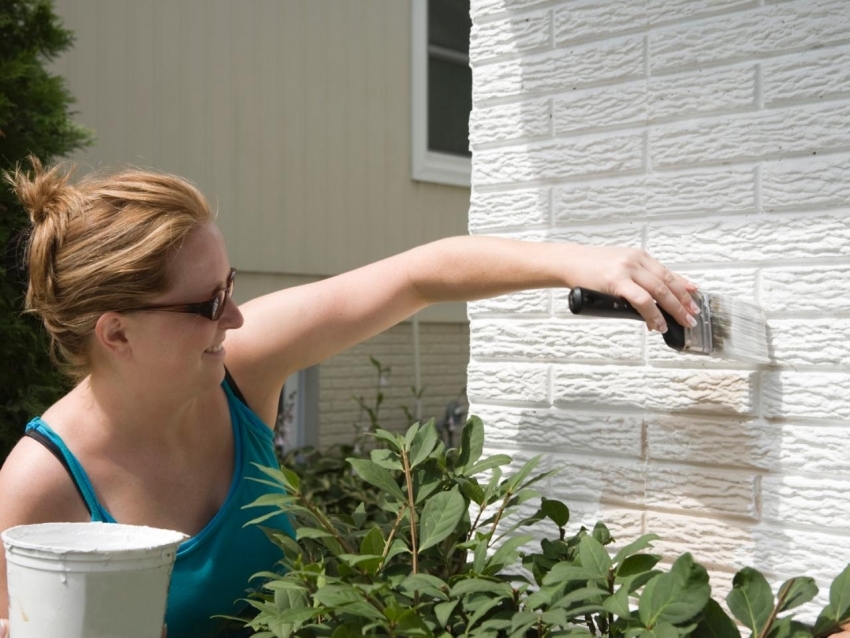
To cover walls made of decorative bricks, you can use silicone paint, which prevents the development of fungi and mold.
Characteristics of mineral facade paint on brick for outdoor use
Mineral facade paint is suitable for finishing brick surfaces. Due to the presence in the composition of the cement, the dye has properties such as vapor permeability and water resistance.
Related article:
Facade paint for outdoor use: the price and characteristics of the compositions
The price of formulations from popular manufacturers, their technical characteristics. Types of dyes for the exterior of the building.
One of the significant advantages of this coating is the ability to restore the paint layer. During operation, any type of finishing material is negatively influenced by various factors. As a result, the coating loses its novelty, cracks and flakes. Mineral pigment helps to restore the attractive appearance of the finish. For these purposes, a special solution is used. After treatment, damage is removed on the coating, the original color is restored.
Note! You can start painting the walls only a month after construction. This time is enough for all leaching processes to end. Earlier staining is also allowed, but only in combination with a special primer.
Features of acrylic paints for outdoor concrete work
Acrylic paints are equally suitable for concrete and brick surfaces. Acrylic resins are used for the production of these compounds. As a result of coloring, a strong film forms on the surface as a coating. It is able to provide reliable protection against the influence of negative environmental factors.
Advantages of acrylic-based dyes:
- environmental friendliness and safety;
- the mixture fits well on the surface to be treated;
- excellent covering ability;

Before buying paint for concrete floor slabs, you should pay attention to the abrasion rate of the painted surface
- high density of the dye allows to reduce material consumption during dyeing;
- the coating allows air to pass through, providing surface ventilation;
- moisture repellent properties.
In some cases, the brick is difficult to paint. To achieve the desired result, a special application technology is used. To do this, mix the acrylic primer with the same type of dye over the brick.The application of this mixture does not cause difficulties, and the color remains for 8-10 years.
Average prices for exterior paints from popular manufacturers
The market offers a wide range of paints and varnishes for concrete processing. Quality Technology Professionalism epoxy paints are especially popular among Russian manufacturers. This type of enamel is characterized by wear resistance and a wide range of colors. The price of the dye is about 400 rubles. for 1 kg of the mixture.
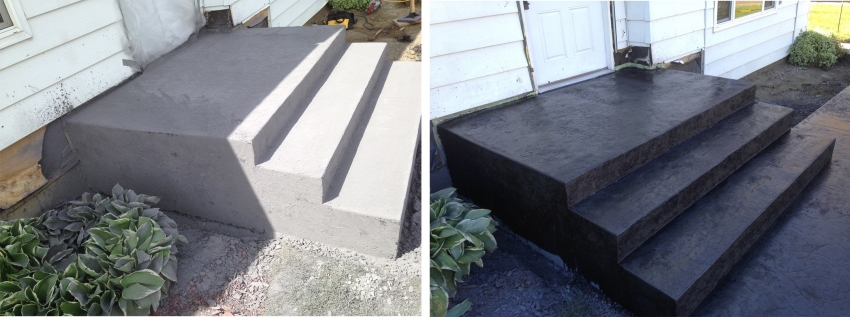
Tikkurila outdoor concrete stains help protect the surface from cracks that can occur as a result of moisture and temperature extremes
Oil based FLUGGER colorants prevent the formation of mildew and mildew on the surface. After drying, the coating is easy to clean. The average cost of a dye is 700 rubles.
The English brand Dulux offers a wide range of finishing materials, including acrylic, organic, water-based and textured facade paints. The average price for 1 kg is about 400 rubles.
Tikkurila dyes are in high demand among consumers. This popularity is due to the simple application system, as well as the excellent decorative characteristics of the coating. The approximate cost of the dye is 700 rubles.
Helpful advice! Painting work must be planned, taking into account the weather conditions, for example, humidity and temperature, the presence of wind.
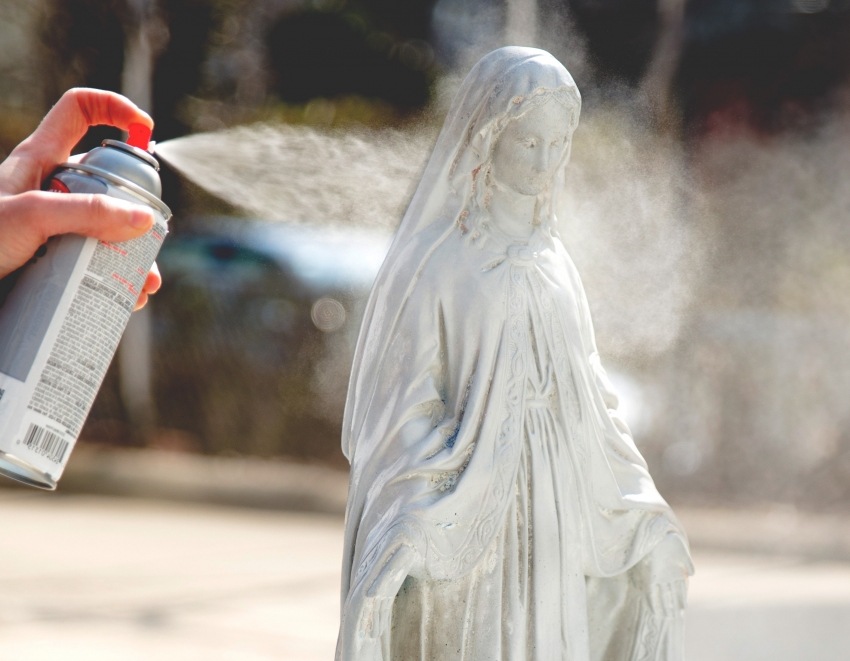
For small concrete structures such as garden sculptures, you can purchase spray paint for concrete, which will allow you to quickly and conveniently paint the surface
The use of facade paints: consumer reviews
Determining the choice of dye will help not only the characteristics of the compositions, but also customer reviews left on the forums:
“When it became necessary to purchase facade paint, I was somewhat puzzled by the variety of materials. I often heard good reviews about the Finnish compositions of Tikkuril, but the price almost scared me away. Nevertheless, he decided to try, trusting the opinion of people, and he did not lose. The quality of the paint really matches the price. It turned out that if you apply a primer to the surface before painting, you can reduce the consumption of dye. "
Evgeny Doroshenko, Moscow
“Tikkurila, of course, is good, but there are other dyes that are no worse in quality. For example, Dufa or Nioxide. As a professional, I have been using Italian and German finishing materials for seven years. During this time, I managed to try a lot. Polish paint Sniezka also offers good characteristics and is easy to use, while the price of the material is much lower than that of Tikkuril. I can also recommend Sinuil. All these paints are reliable and durable, so you can safely take them to work. "
Sergei Makovsky, St. Petersburg
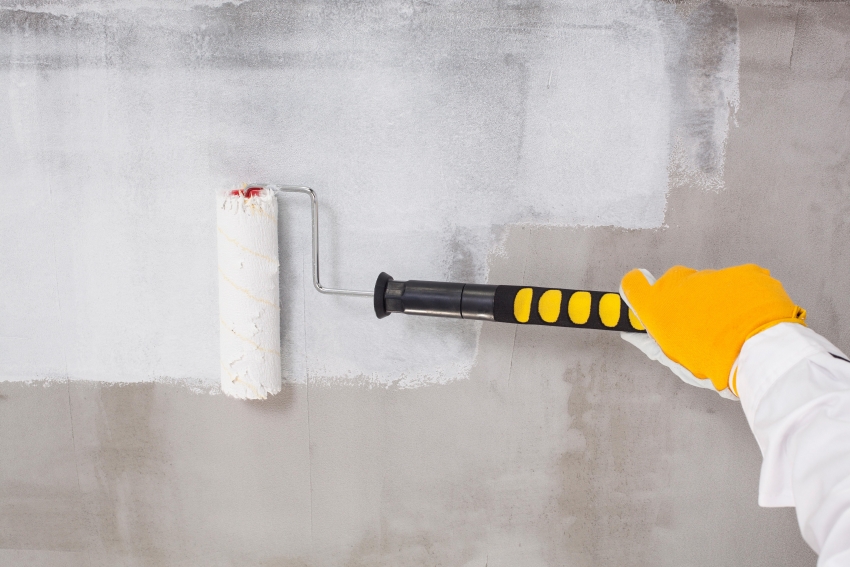
According to consumer reviews, the high cost of concrete paint in most cases justifies itself, since such a composition has better performance characteristics and is more durable in comparison with cheap counterparts
Features of the choice of wear-resistant concrete paint for floors
Any type of flooring needs a protective layer that provides durability and decorative effect. This requirement applies not only to living rooms, but also to industrial and warehouse premises, where the base is a concrete floor. Colorants for concrete surfaces prevent cracking, improve visual appeal, durability and wear resistance.
A protective floor covering is a mixture of fillers, color pigments, specialty additives and acrylic resins.
The scope of application of such dyes extends to the following types of objects:
- storage facilities;
- parking areas;
- industrial premises;
- ramp designs;
- coverage on highways.
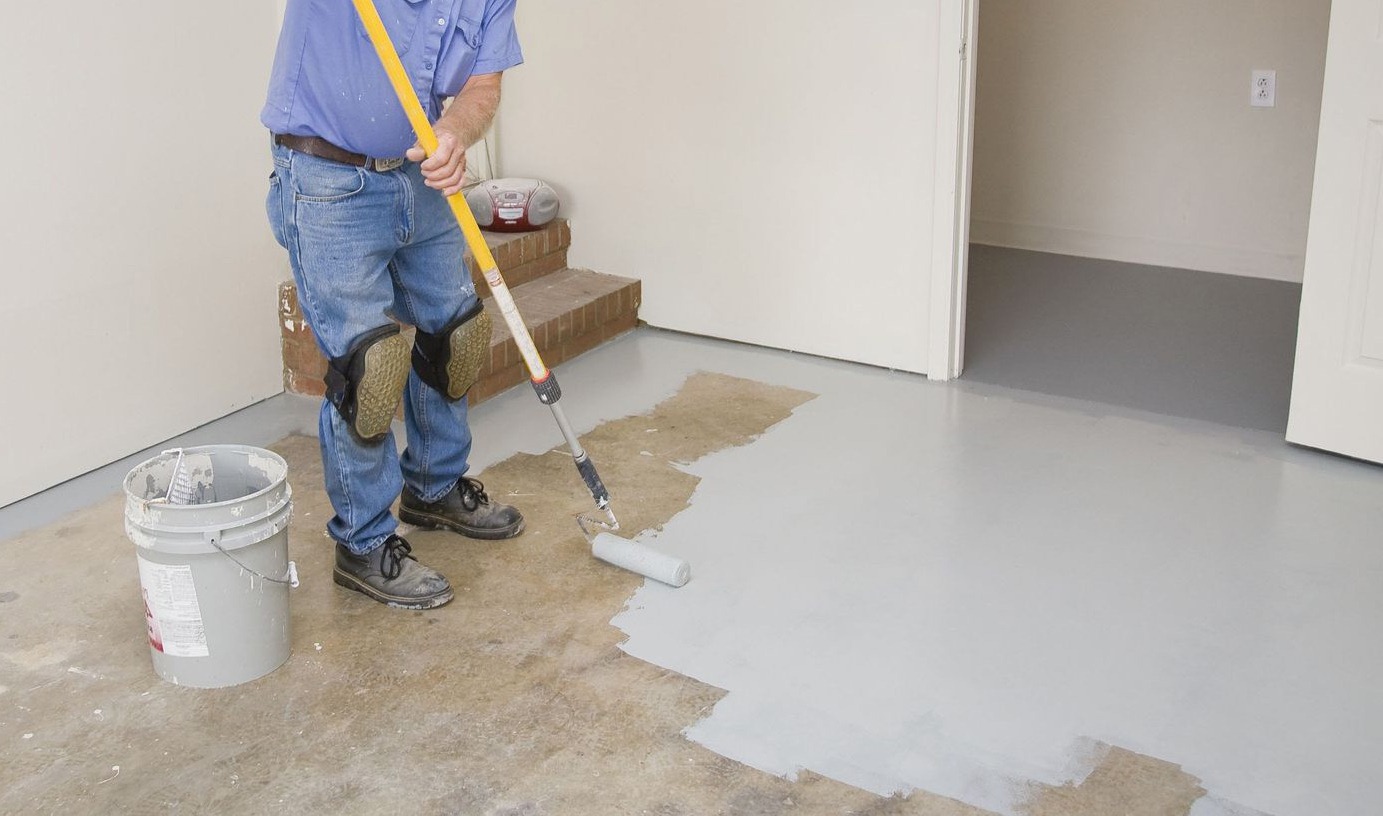
Thanks to a wide selection of shades of dyes for concrete, today it is possible to choose the most suitable color for the interior of the room or the design of the local area
With the help of coloring compositions for concrete, it is possible to treat the entire area, as well as to carry out partial staining for marking vertical or horizontal surfaces.
Characteristics of wear resistant concrete floor paints
Coatings intended for painting concrete floors are characterized by high resistance to atmospheric factors. They are not afraid of exposure to water and salty environments. Depending on the characteristics and recommendations of the manufacturer, staining can be single-layer or double-layer. At a temperature of at least
+ 18 ° C, the composition dries in one layer within 30 minutes.
Note!Dye for concrete surfaces is allowed to cover the floors in warehouses where food is stored. But you can start operating no earlier than a day after staining.
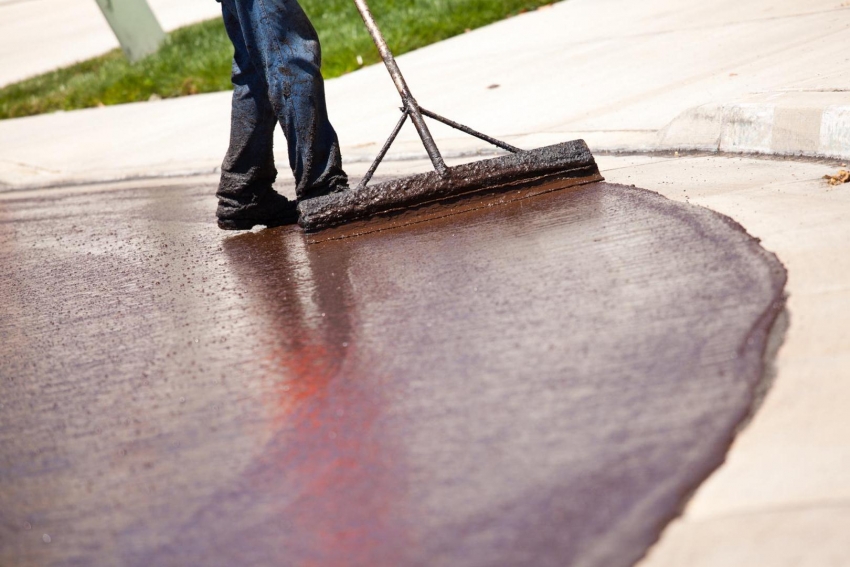
For painting large surfaces such as walkways or garage floors, it is best to use a special wide roller
It is recommended to use a roller or brush for painting. It is allowed to apply the composition with a spray gun. The optimum layer thickness is 6-12 mm. Wear-resistant paints can be tinted in any shade. For single-layer painting, the consumption of the mixture is 250-350 g / m².
Quality coating characteristics:
| Characteristic | Value |
| Maximum intercoat drying time | 2 h |
| Resistance to transport and mechanical loads | + |
| Resistant to detergents | + |
| The degree of resistance to atmospheric precipitation | year-round |
| Operating temperature range (minimum allowable indicator) | -40 ° C |
| Operating temperature range (maximum allowable indicator) | + 80 ° C |
| Film impact strength | 40 cm |
| Possibility of dyeing at low temperatures | up to - 20 ° C |
| Abrasion | 5 kg sand / mm |
| Resistance to the influence of petroleum products | salt, gasoline, oil |
| Grinding degree no more | 60 μm |
The data shown in the table are approximate. There are no universal numbers, these parameters represent average specifications that can be considered optimal for most operating conditions.
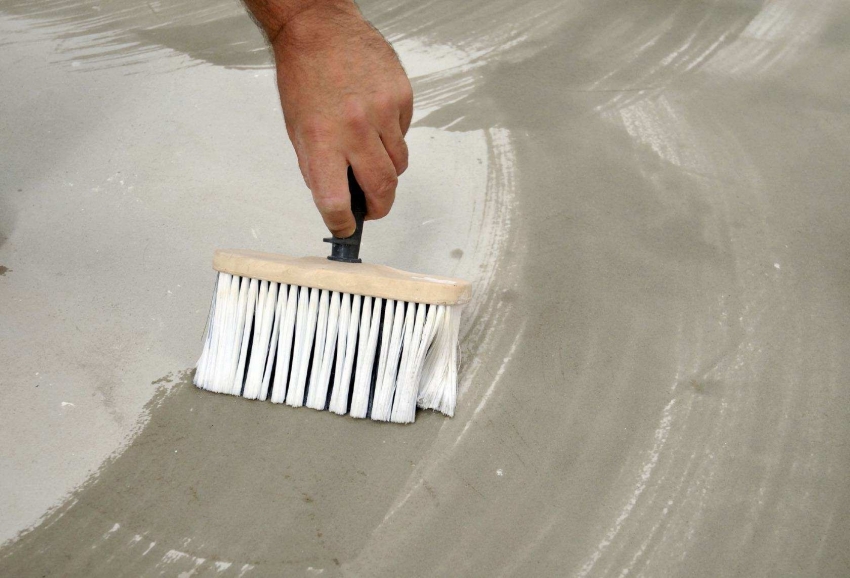
Front painting the concrete floor, the surface should be treated with special agents that disinfect the material, penetrating deep inside
The main types of concrete paints for the floor in the garage
Enamels for concrete surfaces significantly improve the performance of floors and walls. In addition, they provide protection against aggressive chemicals.
According to their purpose, concrete dyes are divided into two categories:
- For places subject to precipitation.
- For rooms with special climatic conditions, for example, low or very high temperatures.
Most often, wear-resistant coatings are used, which are available for sale in a wide range of compositions:
- alkyd;
- epoxy;
- oil-based dyes;
- acrylic;
- alkyd-urethane mixtures.
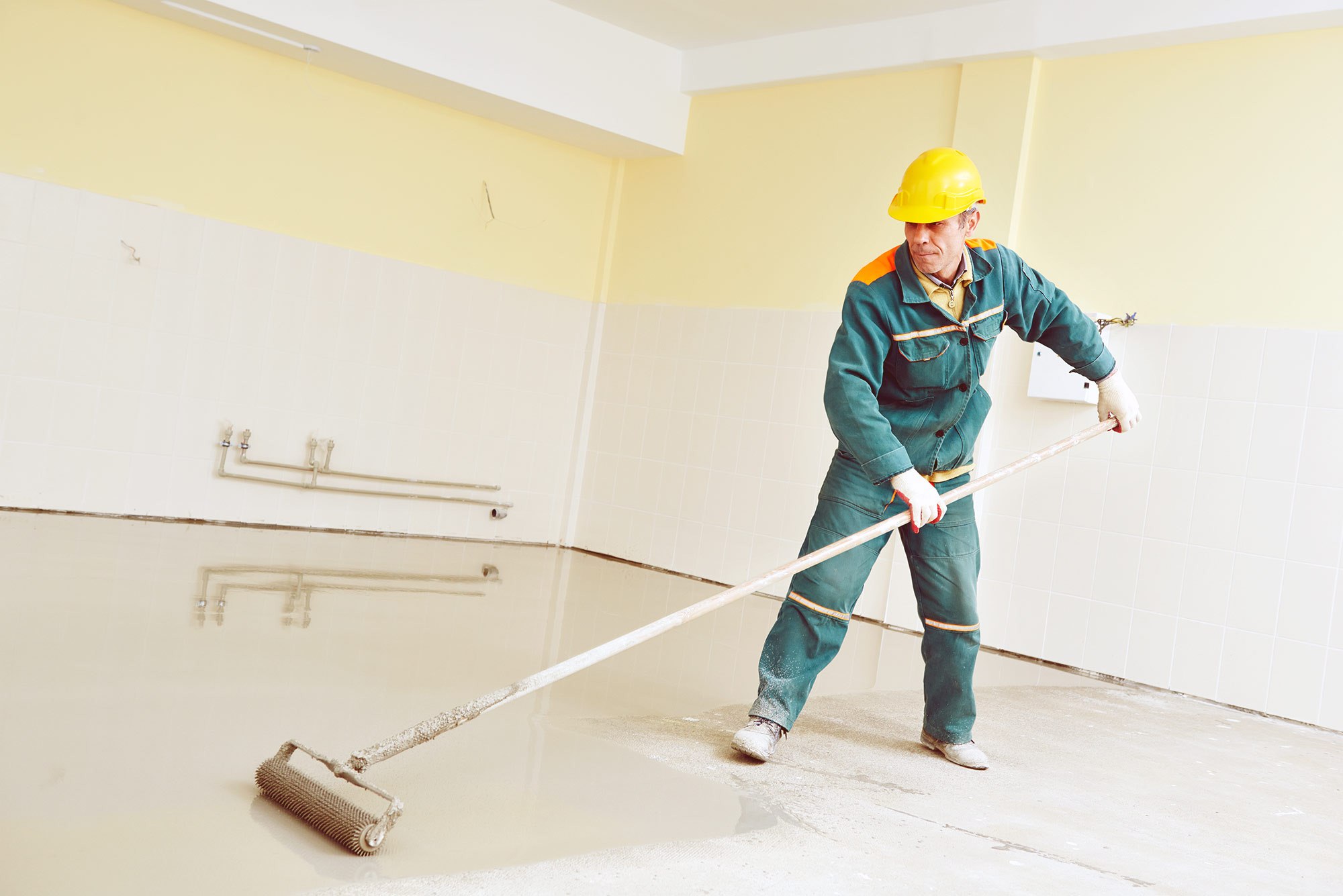
Acrylic paints for concrete are environmentally friendly and safe, therefore, they can be used both outdoors and indoors
As a result of using acrylic paint on concrete for floors, a durable coating is formed on the surface, which is resistant to wear. The floor treated with this dye has a high degree of protection against high humidity. Acrylic compounds are universal, they can be used both outdoors and indoors.
Before painting with acrylic paint, the surface should be thoroughly cleaned of deposits of dirt and dust. If the base is too dirty, rinse it with water and dry well.Acrylic dye is suitable not only for garages, but also for production halls. There are no strict restrictions on the temperature at which finishing will be carried out. The material reacts equally well to both high and low temperatures.
Note! The optimum consumption of the acrylic-based compound is 650 g / m². If this figure is exceeded, the drying time of the coating will also increase.
The concrete floor can also be treated with water-based paints. For these purposes, water-dispersed compositions and latex-based mixtures are suitable. Their advantages include environmental friendliness, fire resistance.
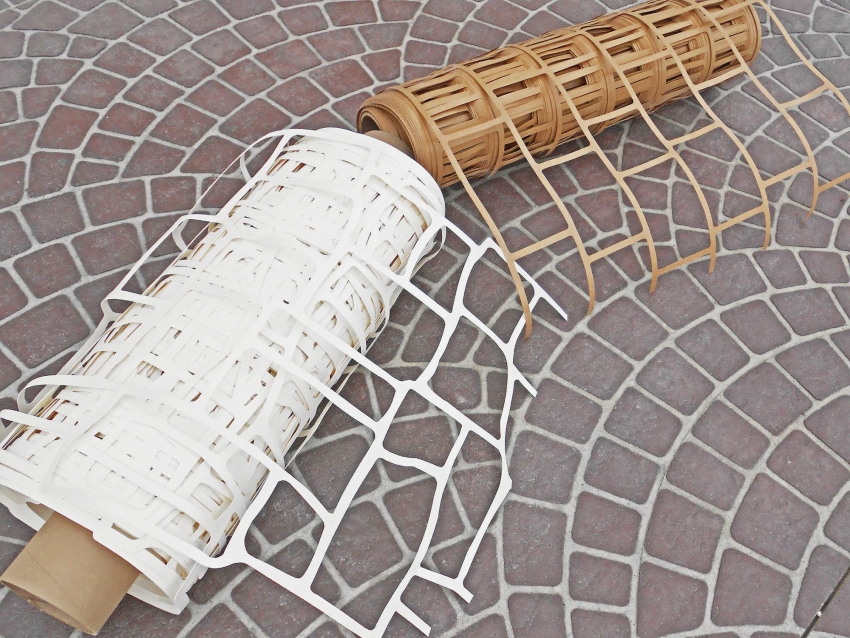
With the help of textured concrete paint for outdoor use and a special stencil, you can achieve an imitation of natural masonry
Features of Wear Resistant Outdoor Rubber Paint
Rubber coloring compositions for concrete are used for the repair or finishing of surfaces used indoors and outdoors. This type of material fits well on plaster (excluding whitewashed surfaces), wood, gypsum, asphalt concrete, bricks, ceramic tiles. Therefore, rubber paint can be called a universally applicable finish.
Rubber dye can be processed:
- ramps;
- sloped entrances;
- walls and floors;
- individual elements of structures;
- front part of buildings;
- parking entrances.
It is not recommended to use this material on floors subject to severe abrasion. This type of coating on furniture and doors is inappropriate.
Features and price of hardwearing rubber exterior paints
This type of coating is a relatively new type of finishing and protection materials.
The dye contains:
- acrylate latex;
- water;
- coalescent (organic solvent);
- coloring pigments;
- special additives with antifreeze and antifungal properties.
Rubber paints are safe for the environment and for people. Moreover, these properties are ensured both at the stage of staining and throughout further operation. Other properties of the film coating, such as mechanical resistance, are not lost either. In the process of painting, a multi-layer application technology is used. The rubber finish has excellent crack control properties. At the same time, the coating passes air well, therefore the surface treated with the composition "breathes".
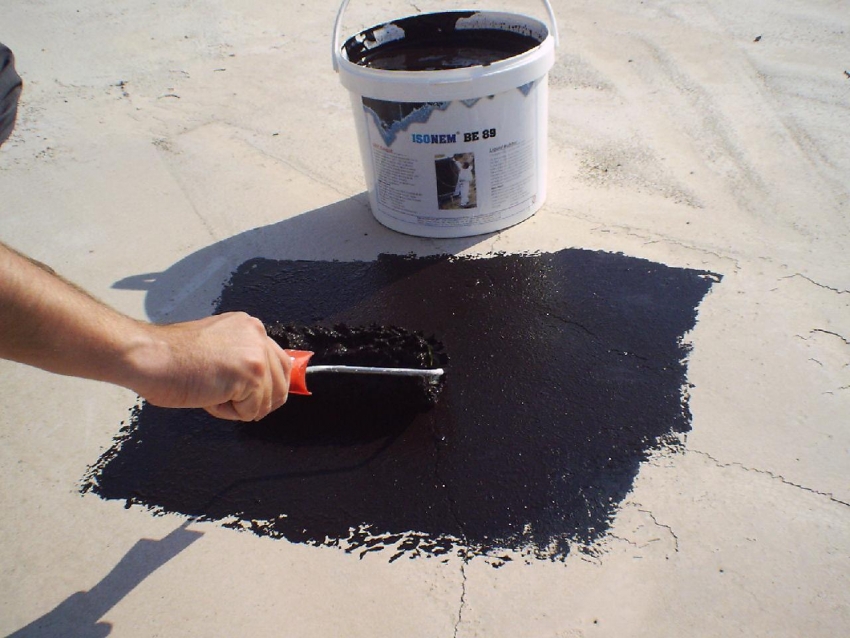
Rubber paint is considered one of the best options for finishing concrete roofs, since it has a long service life and reliably protects the surface from mechanical and weather influences
The average drying time of the paint "to touch" is from 30 minutes. up to 1 hour. It will take about 12 hours to fully dry the surface. One liter of dye weighs about 1.1 kg. The protective film is very elastic, the degree of elongation reaches 400%. Thanks to this, the coating remains intact during operation. Operating temperature range - from -50 to + 60 ° C. On average, a coating can last about 10 years.
Average cost of rubber dyes:
| Brand name | Volume, l | Dye consumption for single-layer painting, g / m2 | price, rub. |
| Superdecor | 6 | 250 | 1120 |
| Tikkurila Novasil | 2,7 | 170-250 | 2035 |
| Prosperity | 12 | 225-250 | 2450 |
| Resolution Universal | 7 | 150-200 | 2850 |
Helpful advice!When working with rubber paint, it is imperative to stir the composition periodically so that the finish lays down in a thin layer and evenly.
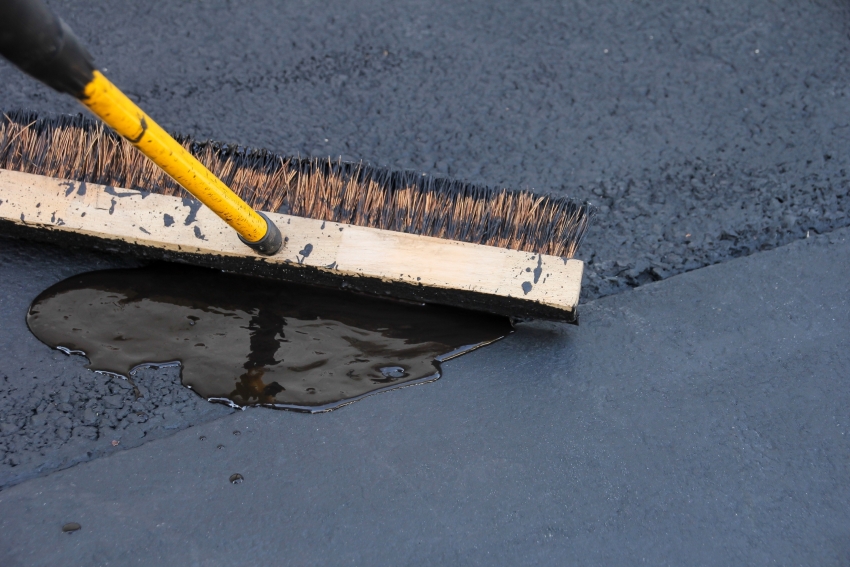
To evenly apply the rubber paint on uneven surfaces, you can use the back of the brush or a special spatula
How to calculate the consumption of rubber paint on concrete
A preliminary calculation of the consumption will allow you to determine how much dye is required for high-quality coloring of the object. Thanks to this, the buyer will be able to avoid unnecessary costs or the need to additionally purchase material.To do this, you need to know what is the area of the surface to be treated. The minimum consumption for the first application is 250 g / m².
On average, the cost of painting 1 square meter is 35 rubles. To find out the required amount of dye, you need to multiply the total area by the consumption. It is advisable to add a spare 10% to the result obtained. The quality of the treated surface affects the consumption of the dye. The smoother and smoother the base, the less composition will be required to stain it. If a primer is applied to porous areas, the number of voids will decrease, which means that consumption will decrease and the adhesive properties of the coating will increase.
It should be borne in mind that reapplying the paint (second layer) is accompanied by a lower consumption, since all voids and defects on the surface are already filled. It is not recommended to use water to dilute the composition, even if a water-dispersed dye is used. Rubber paints and varnishes are much more economical than some formulations. For example, treating a similar area with an oil dye will require 2-3 times more composition than in the case of a rubber finish.
Helpful advice! To exclude unpleasant surprises, before starting to paint, you need to apply paint in an inconspicuous place on a small area of the surface. This will allow you to get an idea of the density and density of the dye, its shade.
Surface preparation before applying rubber paint to concrete for outdoor use
Painting a concrete surface with a rubber compound is carried out in two stages. At the first stage, the base is prepared, at the second stage, the dye is applied.
To begin with, the surface is thoroughly cleaned of:
- spots of fat;
- chalk particles;
- dirt and dust;
- garbage;
- remnants of the old coating (if present).
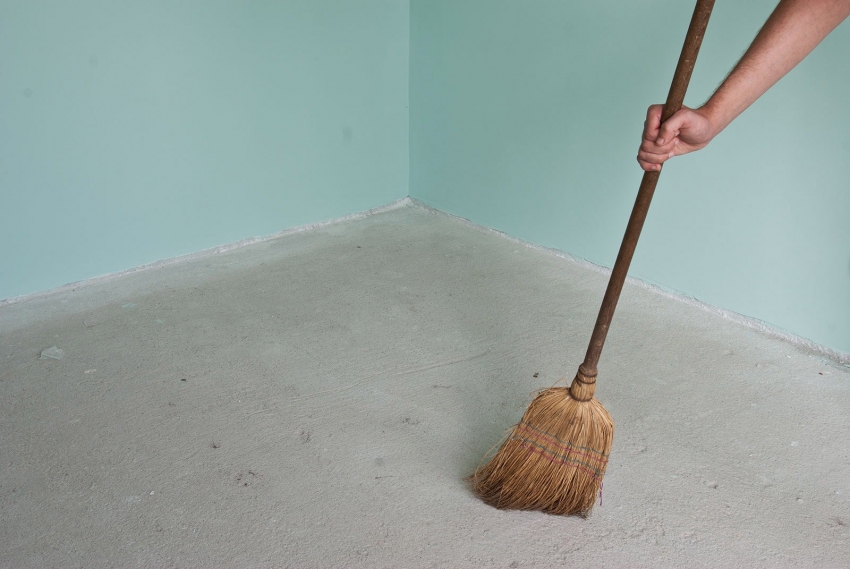
Before applying paint on concrete to the floor, the surface must be thoroughly cleaned of debris and dust
If the concrete surface was previously painted with alkyd and oil based paints, it should be completely cleaned. The walls are then rinsed with sodium phosphate solution. Then the surface is washed with water and dried. If there are cracks or irregularities on the walls, they need to be covered or lightly sanded. After the completed procedures, you need to get rid of construction dust.
Next, a primer is applied, it is desirable that it penetrates deeply into the base material. If there are metal parts on the site, they must be painted separately, taking care of applying anti-corrosion agents. Often, cellular and porous concrete grades are used in construction. In such cases, the surface is painted at least twice.
Concrete staining technology with a rubber compound and coating care
The dye should only be applied to a dry surface. Before starting work, the composition should be thoroughly mixed. If the instructions provide for the addition of a coloring pigment, the material is stirred after its introduction. It is better if at least 3 layers are applied to the walls.
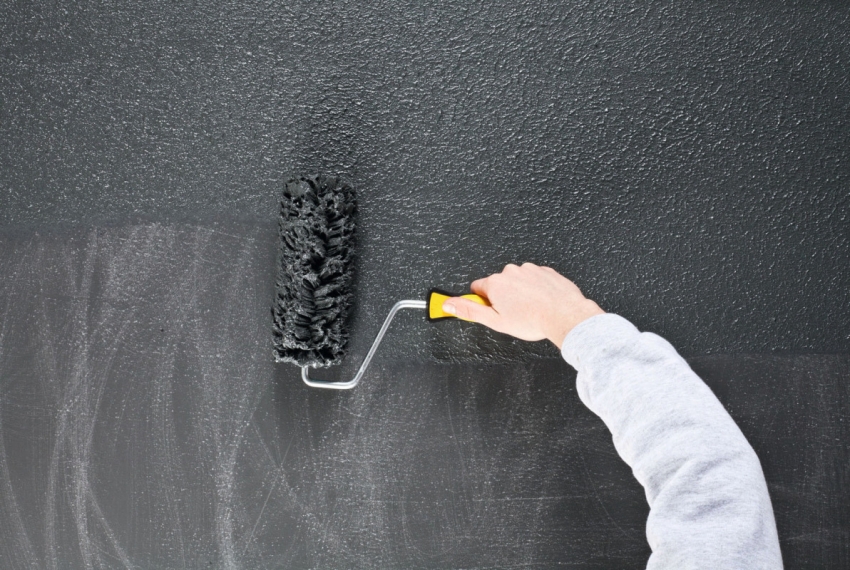
For a high-quality coating of concrete with rubber paint for outdoor use, the surface should be painted in several layers
It is recommended to use a brush or roller in the work. The first layer should be thin and neat. Reapplication of the composition is carried out only after the first layer of paint has dried. This takes about 1 hour. It is recommended to wait at least 2-3 hours between the second and third application of the dye.
When the work is over, you should immediately rinse the entire tool with clean water until the dye has dried. The coating does not need any special care, but the first wet cleaning is not recommended earlier than 7 days after staining.It is allowed to use soap solutions for surface cleaning and antiseptic agents.
You should not save money when buying a dye, most of the high-quality concrete compositions on sale have a high price, which is justified by high operational and technical characteristics.
